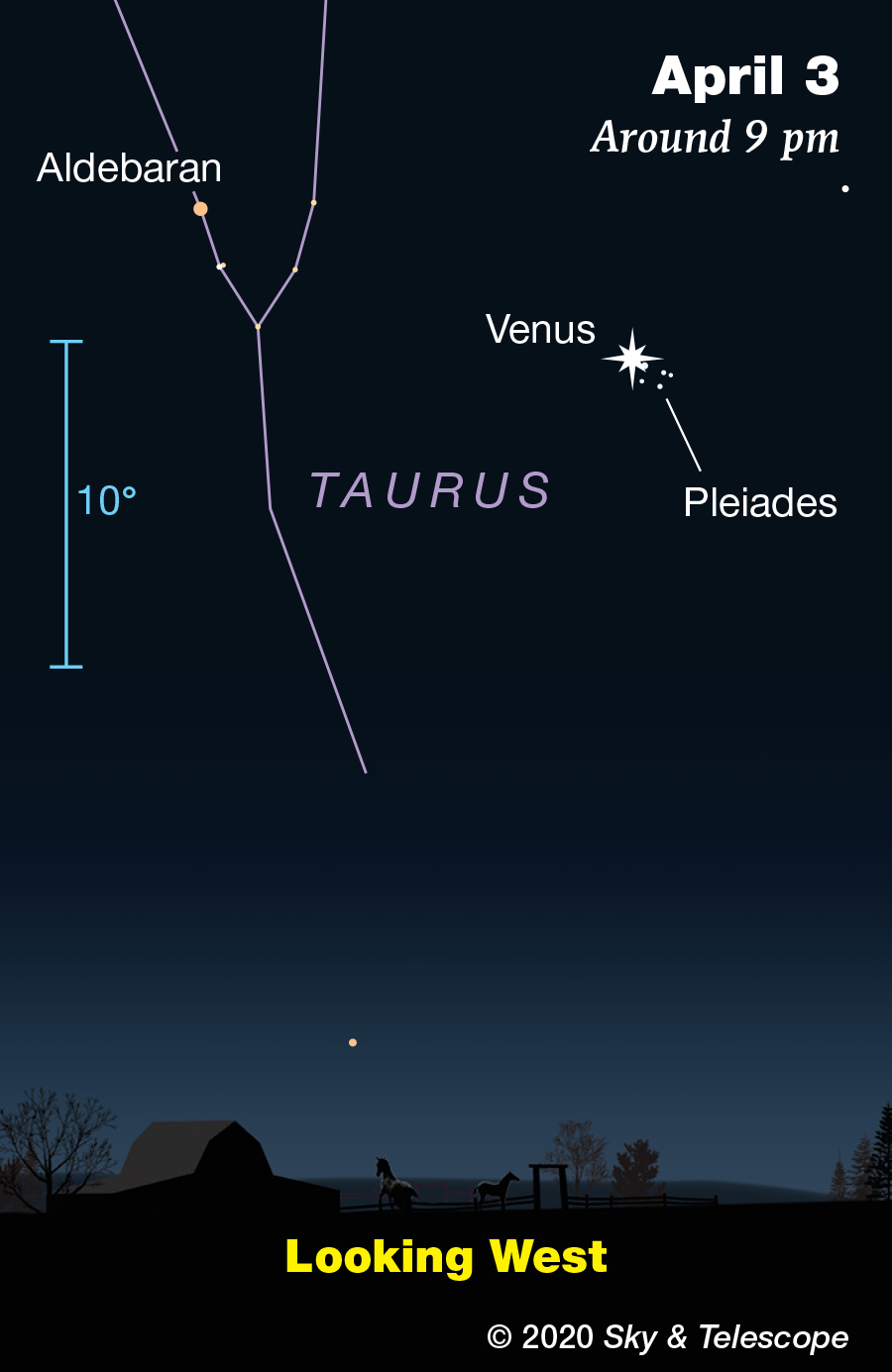Contacts:
Diana Hannikainen, Observing Editor
855-638-5388 x22100, [email protected]
Gary Seronik, Consulting Editor
[email protected]
Note to Editors/Producers: This release is accompanied by a high-quality graphic; see the end of this release for the image and link to download.
If it’s clear this Friday evening, April 3rd, you’ll be treated to the sight of Venus and the Pleiades in an apparent cosmic embrace. Every eight years, the brightest planet and the best-known open cluster come together — sometimes they’re a bit farther apart, sometimes they’re closer together. This year is a good one for viewers in North America: Venus will pass a mere ¼° south of Alcyone, the brightest star in the cluster. For viewers farther east, the planet will brush by Merope, instead.
Venus and Pleiades Pairings
Venus and Earth are in what’s a called a near resonance. As a result, Earth and Venus return to nearly the same positions in their orbits at eight-year intervals, which is why we get an event like this Friday’s infrequently.
In fact, Venus visits the Pleiades’ neighborhood often, but it’s only once every eight years that the planet strolls right through the cluster. Since the orbital paths of Venus and Earth are elliptical and not perfect circles, this resonance effect is imprecise. In addition, Venus’s orbit is tilted with respect to Earth’s path around the Sun by 3.4°, which results in slightly different albeit similar passages every eight years. If you remember the last close encounter on April 3, 2012, you might be able to compare what you saw with this year’s event.
How to See the Planet Inside the Cluster
Venus currently blazes at magnitude –4.6 so you can’t miss it (it’s almost 20 times brighter than Sirius, the night sky’s brightest star). Look toward the sunset direction and halfway up the western sky during evening twilight and the brightest object will be the planet. As the sky darkens, more and more Pleiades cluster members will start appearing. You can see them without optical aid, but binoculars will greatly enhance the view. If you have access to a small telescope with a wide-field eyepiece, grab it: You should see Venus as a tiny, fat illuminated crescent.
“Don’t despair if the weather forecast is dismal for your location this coming Friday,” says Diana Hannikainen (pronounced HUHN-ih-ky-nen), Sky & Telescope’s Observing Editor. “During several evenings before and several evenings after the event, Venus is still pretty close to the Pleiades and will make for a delightful scene nevertheless. So go outside, starting tonight, and look up.” In fact, Venus will remain within 5° of the cluster through April 9th.
Should your Friday evening viewing plans be scuppered by bad weather, you can still watch the event via livestream at Gianluca Masi's Virtual Telescope site starting at 1:30 p.m. Eastern Daylight Time (17:30 UT).
For more tips on how to observe and photograph this event visit our website.
Sky & Telescope is making the illustrations below available to editors and producers. Permission is granted for one-time, nonexclusive use in print and broadcast media, as long as appropriate credits (as noted) are included. Web publication must include a link to SkyandTelescope.org.

Sky & Telescope / Gregg Dinderman
 0
0
Comments
You must be logged in to post a comment.